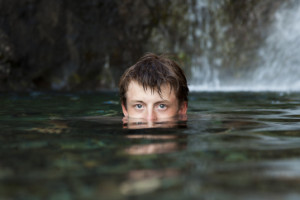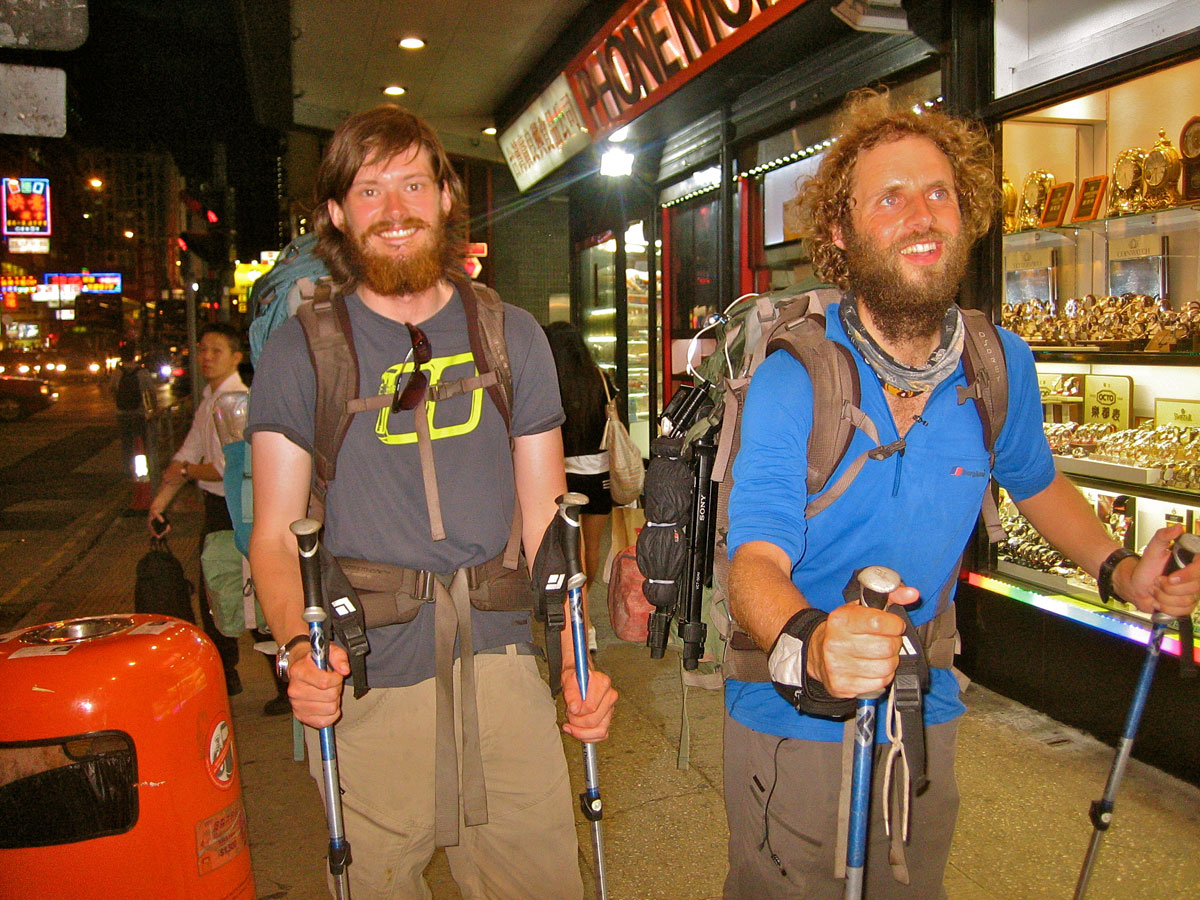Our world we live in is easier to explore than ever before in history, the invention of the telephone, the television and the aeroplane has brought us together but perhaps drawn our attention from our homes. I am as guilty as any and have spent so many hours searching, dreaming and longing to venture into far away places when just outside my backdoor an incredible landscape lies waiting, untouched.
Travelling abroad people would often say, ‘What is Scotland like?’ or ‘Tell me about the people there’ even ‘Can I really shoot a haggis?’ It was a little embarrassing to reply ‘Well, apart from the west coast (where I grew up) I don’t really know.’
So I decided to find out. On low budget and high hopes the Machair to Munro expedition went from concept to reality. I didn’t want to break records, nor achieve the impossible. I simply wanted to explore my back yard a little better.
11 months into my trip I have circumnavigated Scotland in a sea kayak, cycled the inland border and spent seven months climbing all the munro mountains (greater than 3000ft) to which there are 282. I have now less than fifty to go.
Travelling almost entirely alone, although sometimes joined by friends, family and strangers alike.
I was more inclined to seek out company along the way. Adventure is always better shared. For those who couldn’t join I have been recording my trip in photos, writing and a video diary using PUNKT – a mobile GPS located video application which allowed vicarious adventure with home comforts. You can follow the expedition here: http://punkt.luxson.com/MachairToMunro2013/
Starting in May last year in a kayak re-built over the winter in my dad’s garage I set off into a stiff gale, joined by my father for the first few days we made it just one day into the trip before being storm bound for a further three.
The weather abated we set off and soon I was travelling alone, it is fair to say I had underestimated the tides, exposure and committing distance between mud flats which were presented by the Solway Firth. Progress started slowly, I was scared and fresh from exams at university, feeling decidedly un-fit.
Rounding the tidal headland at the infamous Mull of Galloway two weeks after setting off with a bounce and awe struck gaze at the huge cliffs I had found the start of a rhythm. Each night beaching onshore provided much needed rest and often the chance to soak in some local hospitality. People often helped to drag the boat from sea to camp and went out of their way to help give advice on tides and cliffs ahead, I no longer felt quite so alone at sea.
Moving onto the west coast the shoreline became less open and more rugged. On an average of 30-40km a day (on a good day up to 70km+) the coastline slowly crept past. The west coast was home to me and had a wonderful familiar feel even when exploring new places and unknown towns.
Occasionally I detoured from the kayak to tackle some of the remote coastal munros, this included Ben More on Mull, the Skye Cullin and Knoydart to name a few. In the company of a friend who had never kayaked before progress became blissfully relaxed between Skye and my home town of Ullapool. We arrived just in time to enjoy a week of coastal rowing at the first world regatta, a growing and popular traditional sport which is re-emerging in Scotland with an exciting pace.
The north coast lived up to its fearsome reputation of exposure, committing passages and powerful tidal overfalls. The only truly scary passages were along the roof of Britain where huge waves barrelled over the boat in a melee of conflicting wind, tide and swell. Fear was balanced with incredible sea cliffs, stacks and caves carved from the harsh conditions over years of battering.
I was relieved to round the corner and head south but also somewhat sad to say goodbye to what I had been told was the best coastline.
The east coast was a pleasant surprise however, I discovered just as incredible coastal features to explore as anywhere else and less open sandy bays than I had expected (although there still were plenty).
The overall highlights of the paddle journey were;
Sailing past Applecross with an umbrella while singing Mary Poppins; remote camping on the west coast bays alone with nothing but a sunset and 10 million midges; exploring the stacks and caves between Wick and Lybster (a must do paddle day for anyone); and getting up close and personal with bottle nose dolphins past Aberdeen.
It was early September when I landed the boat for the last time. I was not alone at the finish and like the start had been joined by my father and also my cousin Joe. We swapped the kayak for bicycles leaving Joe and I to ride the inland border over three days. The journey had come full circle but was not yet half way. It was time to start on the munros.
I found the transition onto dry land at first delightful but then quite challenging, I started slow with the idea was that my legs, which had been redundant in the kayak for four months, would get a bit of ‘practice’ before bigger days in the hills. What I did not bank on was how the sea had softened the balls of my feet; huge painful blisters/trenchfoot slowed progress at the start but soon toughened up.
The hardest part of the inland journey was that at sea I knew I would get wet each day whereas inland there was a hope I could stay dry. The mental drain of wet boots and clothes every day for weeks was quite difficult. I also found challenge at first in how long it took to travel any lateral distance once climbing. It could take a week to move just 10km down the road but summiting 14 Munros in the process. I have now grown to love this, it is like seeing the same view from every different angle in a whole pallet of lights and weather.
There was a huge advantage that unlike sea kayaking which is harder for people to join on in terms of gear and access it became easier for friends to join in. This kept spirits high even in the harsh Winter weather which fast approached.
As the snow arrived I started to use snow shoes which strangely sped progress up a little. Navigation also became harder, I often felt like I was inside a ping-pong ball. Needless to say the weather has been pretty tough. I initially set a rule that I would not venture into the hills with winds over 60mph but have been pushed to raise this to 80mph with the conditions this year. On the upside there have been some phenomenal rainbows.
Until about mid October I wild camped every night of the trip, as weather grew progressively wetter drying out became increasingly difficult, I started to use occasional bunk-houses and free bothys (open wilderness houses) almost as regularly as nights under canvas. The bothy culture is one every person should endeavour to experience at least once, you never know who might turn up in the open stone buildings and when. The culture is to make room for as many as possible and more often than not the occupants end up chatting like old friends over the warmth of a fire inside with a bottle of whiskey to heighten the spirits even further. Two groups enter as bothy strangers and almost always will leave as friends.
Looking back after 240 munro’s done I have realised that when I set out the trip was all about the scenery, the rugged, wild and remote. This is still quite true although it now feels a smaller part replaced instead by the seeking to explore the local culture which surrounds it. The coastal and climbing communities are always looking out for each other and will always be there if you need them; to me this is the most precious discovery I have made on my journey.
Will Copestake is a young adventurer, blogger and photographer. Follow him on http://willcopestakemedia.com/, Punkt Map: http://punkt.luxson.com/MachairToMunro2013/,
Twitter: @willcopestake, Facebook: https://www.facebook.com/WillCopestakeMedia.




